Here is some general information on skate and stingray biology from topics that often come up when discussing these similar elasmobranch fishes.
Download: Rays and Skates Upclose! (Powerpoint Presentation)
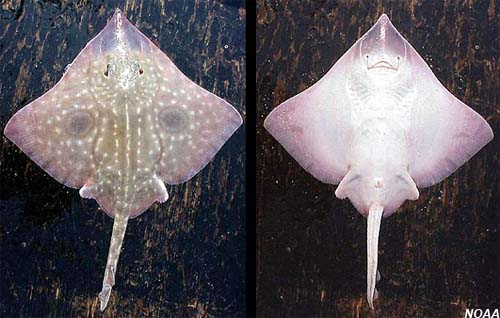
The dorso-ventrally flattened bodies allow rays and skates to glide closely over the bottom sediments in search of prey. Their eyes and spiracles are positioned on the top of the head which allows them to take in water for gill ventilation (respiration) while partially buried in the sand. The mouth is located on the underside of the animal as an adaptation for feeding on benthic invertebrates and fishes.
Rays and skates have life spans ranging up to 50 years.
![]()
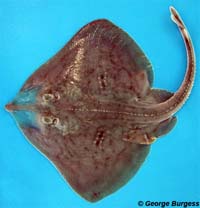 The skin of rays and skates is similar to that of sharks.
The skin of rays and skates is similar to that of sharks.
The skin feels exactly like sandpaper because it is made up of tiny teeth-like structures called placoid scales, also known as dermal denticles. These scales point towards the tail and helps to reduce friction from surrounding water when the animal swims.
Because of this, if someone rubbed the skin from the head towards the tail, it would feel very smooth. In the opposite direction it feels very rough like sandpaper.
Skate skin may also possess thorns in different regions of the body depending upon species. These thorns help to defend skates from predators.
The eyes of rays and skates are located dorsally, on the upper surface of the animal, while the mouth is located on the underside. Based on this, it is believed that vision may play only a secondary role in prey location and feeding behaviors.
It is thought that most rays and skates have good vision especially in dim light. Recent research indicates that rays may even be capable of color vision.
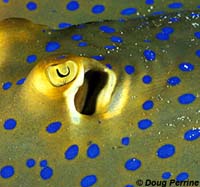
Similar to sharks, rays and skates have many keen senses that are geared towards helping them locate prey. Depending on the species or the environment certain senses are more or less important to them for locating their targeted prey, which is most often benthic invertebrates.
Elasmobranchs use the senses of smell (chemoreception), vision, hearing, the lateral line system, and electroreception (ampullae of Lorenzini) for capturing prey.
The lateral line system, which most fish possess, allows them to detect waves of pressure or mechanical disturbances in the water. The ampullae of Lorenzini are receptors that can detect weak electric fields. This sense is unique to rays and skates and their relatives. They primarily use this sense to locate cryptic prey that is buried below the bottom sediments.
Rays and skates have no bones, but instead have skeletons made of cartilage as do sharks. Cartilage is tough and fibrous but not as hard as true bones.
![]()
Male rays and skates (as well as sharks) have claspers, while females do not.
Claspers are modifications of the pelvic fins and located on the inner margin of the pelvic fins. They are used to transfer sperm to the female during mating. Females do not have claspers.
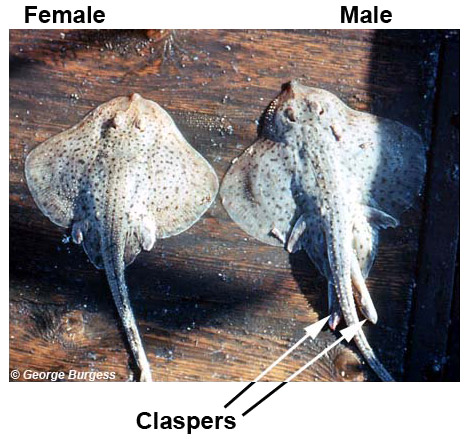
While skates are typically found in more saline habitats (marine), rays are sometimes found in brackish estuary waters and freshwater lakes and rivers far inland from marine environments.
In Florida, the Atlantic stingray (Dasyatis sabina) is known to live in freshwater along the St. Johns River waterway as well as inland freshwater lakes. These populations of the Atlantic stingray are unique in that they spend their entire lifecycle in freshwater.
Sharks, in particular hammerheads, often have spines in their digestive tracts and imbedded in their jaws from feeding on stingrays.
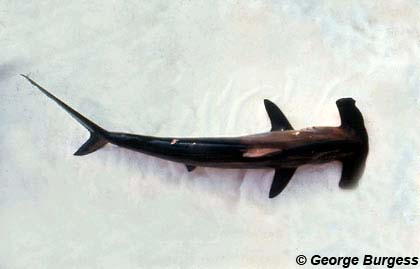
The majority of rays and skates feed on bottom dwelling (benthic) animals including shrimps, crabs, oysters, clams and other invertebrates.
Some rays such as the manta and devil rays are filter feeders relying on plankton as their food source.
Rays give live birth while skates lay eggs in egg cases, often called “mermaid’s purses”.
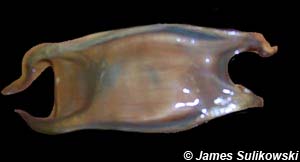
Neither fish exhibit parental care other than moving to a protective area to lay eggs or give birth.
These unique animals swim through the water by gracefully undulating the modified pectoral fins, appearing to fly through the water. They sometimes make spectacular leaps from the surface of the water.
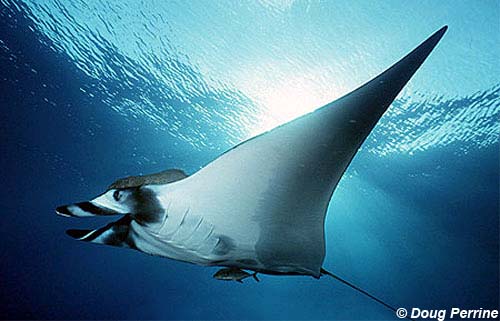
Answers compiled by: Cathleen Bester